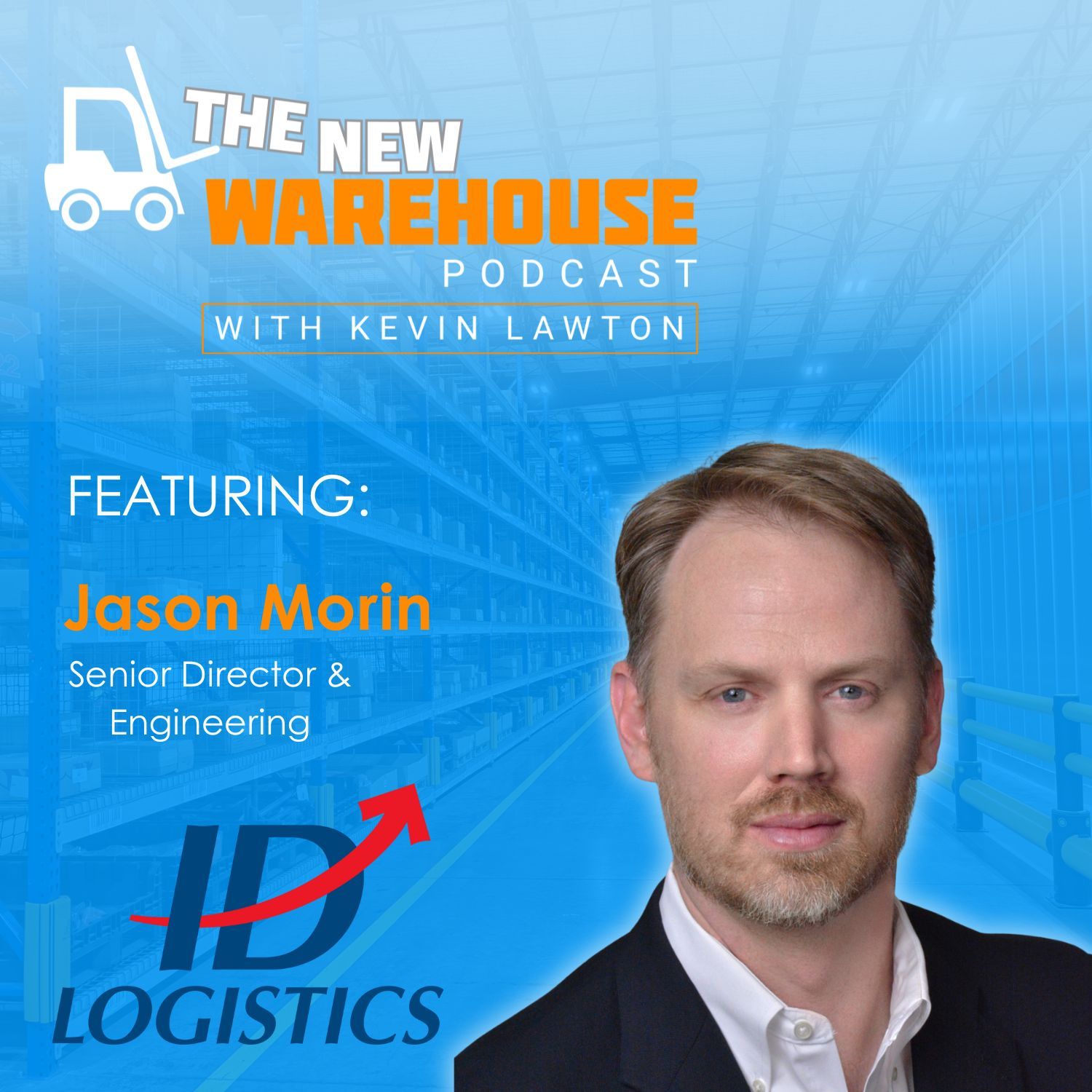
637: Designing Warehouse Systems with User Experience in Mind
In today’s episode, Kevin chats with Jason Morin, Senior Director of Continuous Improvement and Engineering at ID Logistics. They discuss how technology, user experience, and continuous improvement intersect in today’s warehouse operations. ID Logistics is a global 3PL operating across 18 countries with nearly 18 million square feet of space dedicated to e-commerce, FMCG, food and beverage, healthcare, high-tech, and more.
Jason shares insights on ID’s internal labor management system, its global AI initiative, and why he believes good user experience design is critical for warehouse management systems. He also reflects on lessons from the floor, from identifying process breakdowns to balancing technology with human capability, offering a candid look at how warehouses can adapt to rapid change while staying focused on what matters most—making work easier and more efficient for people.
Innovation with Purpose: Using AI and Data for Real Improvement
Jason highlighted how ID Logistics is deploying an in-house labor management system and piloting AI across global operations. “Currently, we’re deploying an internal labor management system, which is pretty exciting, an in-house developed system that we’re deploying globally,” he explained. AI is part of this push, with an internal team in France exploring both in-house tools and external partnerships.
While it’s tempting to chase shiny new technologies, Jason emphasized a grounded approach to innovation: “Understand the problems and then that will help you lead to the right solution. Sometimes we start looking at solutions without having a full understanding of what the problem is.” By focusing on real operational pain points, ID ensures technology enhances—not complicates—workflows.
Why User Experience Matters in Warehouse Systems
Jason stressed that too often, user experience (UX) is an afterthought in industrial software. “We do all this work, we do all this configuration design, and then we put the life of the DC into the hands of a worker on the floor who probably has received minimal training, and expect them to get things right every single time,” he noted.
He pointed to simple design cues, such as action verbs, logical cursor placement, and intuitive error checks, as essential for reducing mistakes and frustration. In one example, scanning barcodes without safeguards led to frequent errors. His solution: “Good design would be, hey, how do we ensure that we scan the right barcode? Build those quality checks throughout the process to ensure people are doing the right thing.” For Jason, good UX isn’t just about efficiency; it’s about creating systems that enable humans to succeed under pressure.
Balancing Technology with the Human Element
As new generations enter the workforce, Jason notices a rise in expectations. “This younger generation…they’ve been using iPhones since they were kids. I think they have a higher expectation that the software they use is built around them. It’s more intuitive. It’s interactive,” he said. That means warehouse systems need to feel as natural as consumer apps.
He believes technologies like pick-to-light succeed because they play to human strengths: “The human mind can process an image 60,000 times faster than a word, right? That’s why visuals are so important.” Ultimately, Jason sees technology as an enabler rather than a replacement: “I view new technologies, especially AI, as something to help us perform better…they make us perform better as humans.” The key, he argues, is designing processes and systems that guide workers seamlessly, leaving less room for errors and more room for efficiency.
Key Takeaways on Designing Warehouse Systems
- ID Logistics is deploying a global, in-house labor management system in conjunction with a company-wide AI initiative.
- Solutions should start with problems—technology is most valuable when it addresses real operational pain points.
- Effective UX design reduces errors, frustration, and training time, especially in warehouse management systems.
- Visual technologies, such as pick-to-light systems, work because humans process images far more quickly than text.
- Younger generations expect intuitive, app-like systems in the workplace; poor UX will create friction and disengagement.
Listen to the episode below and leave your thoughts in the comments.
Guest Information
Jason Morin, Senior Director of Continuous Improvement and Engineering at ID Logistics
- Connect with Jason Morin on LinkedIn
- Email: jmorin@id-logistics.com
- Learn more: ID Logistics Website
- Follow ID Logistics on LinkedIn
For more information about effective warehouse systems, check out the podcasts below.
Live from WERC: The Future of Warehouse Distribution, Technology, and Workforce Innovation
628: Orchestrate Warehouse Automation Technologies with GreyOrange and enVista
Rack Safety with UpRight Warehouse Solutions: Fast Repairs, Real Prevention, and Smarter Response

Warehouse Improvement Through Smarter Project Management » The New Warehouse
[…] 637: Designing Warehouse Systems with User Experience in Mind […]